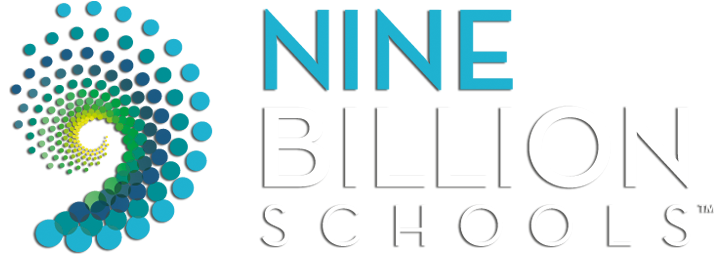How to Curate Lifelong Learning: Part 2
In part I of this series on curation, I defined curation and discussed how you can find good curators to support you in your lifelong learning journey.
Once you make curation a part of your learning toolbox, there’s a good chance you’ll want to try your hand at becoming a curator who others look to for support. In this part of the series, we’ll explore how to do that.
Becoming a Curator
Once you have started following curators, you are actually well along the path to becoming a curator yourself. After all, you are already actively finding and reviewing information on topics you care about.
With just a bit more thought and effort, you can leverage your efforts into becoming a source of knowledge and learning others will want to follow. Along the way, you will enhance and deepen your own learning significantly as you think about how to curate effectively for others.
How do you do all of this this? First and foremost, you need a strategy and a process.
Curation Strategy
Creating a strategy may sound daunting, but an effective curation strategy really comes down to just four key elements.
Who? – Who will you be curating for? Most likely your target audience will be people who share something in common with you – like, for example, working in the same field or industry. I recommend trying to picture a few examples of potential followers in your mind and maybe even writing down what you feel are some of their most relevant characteristics.
Why? – What is it you want to help your “Who” do? How will what you curate be used? Having your audience’s motivations and the outcomes they want to achieve in mind makes it much easier to identify the content that it will be most valuable to share.
What? Given what you know about “Who” and “Why” types of content and experiences seem most valuable? You may not know exactly at first, but develop some working theories and start trying them out.
How? What medium and frequency make sense for sharing the knowledge you curate? I’ve mentioned newsletters, but those certainly aren’t the only option. A blog, a Twitter feed, YouTube, or some other channel may make more sense for your Who, Why, and What. And, should you send out resources daily, weekly, monthly? Again, you may not know for certain at first, but develop a theory based on what you do know and give it a try.
With a strategy in place, you are ready to engage in the curation process.
Curation Process
There are many ways to go about curating knowledge and learning experiences, but all of them, when done effectively, involve the following six elements:
Discover – To have content to share, you first have to find content that is a good fit for your Who, What, and Why. We discussed this part of the process in the previous section.
Organize – As you find content, you need to create order from the chaos. As already suggested, a simple approach is to throw everything into one or more e-mail folders so that you can sort through them later. If, on the other hand, you use a tool like like Feedly or Inoreader, you can easily use categories and tags to group similar items together and make them much easier to find later. You can even add notes to items to make sure you will remember just why you saved them.
Contextualize – This is where the real value of curations starts to be realized. Using whichever medium you have chosen for sharing your findings – text, audio, video, or some combination – you add explanations, draw comparisons, connect the dots between the items you have discovered and the world of your followers. In the process, you add a dose of your own perspective and personality.
Share – Once everything is organized and contextualized, the time has come to share all the value you have created with your audience. Some curators do this through a single channel, like an e-mail newsletter, but you may want to take advantage of multiple channels. In addition to sending out the Leading Learning newsletter, for example, I also share curated items on Facebook and Twitter. Some of these may also be in the newsletter; some are “bonus” content.
Monitor – One of the best ways to improve your curation efforts over time is to pay attention to what prompts a response from your audience. Which of the items you share get clicked on? Commented on? Shared or liked on social media by your followers? These are metrics that the platforms you choose to share content on will most likely have easy ways of tracking – and they help you know whether you are hitting the mark or not.
Refine – Finally, based on what you learn from the other parts of the process, what changes will you make going forward? As part of the process, you may find new content sources. You may find that one channel (e.g., Facebook) seems to work much better than another for sharing content (e.g., e-mail newsletter). You may find that you are hitting the mark better in some areas of your content than others. Over time, as you receive this feedback and make changes, your curation efforts will become more and more valuable.
If it is not obvious already, the process outlined above is very much a learning process. As you seek to help others you will inevitably find that you learn a tremendous amount yourself, not just about your chosen topic areas, but also about how to effectively facilitate and contribute to knowledge sharing.
Does that make sense?
Jeff Cobb is co-founder of the learning business consulting firm Tagoras and co-host of the weekly Leading Learning podcast.
As I suggested earlier, curation is fundamentally about making sense – both for yourself and, should you decide to become a public curator, for others. Like learning itself, curation is a process.
Very few things in our complex world make sense based on single blog post, Tweet, or newsletter entry. The real key to curation, as with nearly all effective lifelong learning practices, is to stick with it over time, both as a follower of other curators and as a curator yourself.
If you do, my experience is that learning acquires a richness and a depth that is difficult to achieve with more traditional approaches. The best news is that the tools to embrace curation as an approach to learning are readily available to all of us. It makes a great of sense to add curation to your lifelong learning mix today.
Jeff Cobb is co-founder of the learning business consulting firm Tagoras, co-host of the weekly Leading Learning podcast, and a frequent speaker on topics related to the transformational power of lifelong learning. You can connect with him on Twitter and LinkedIn.







